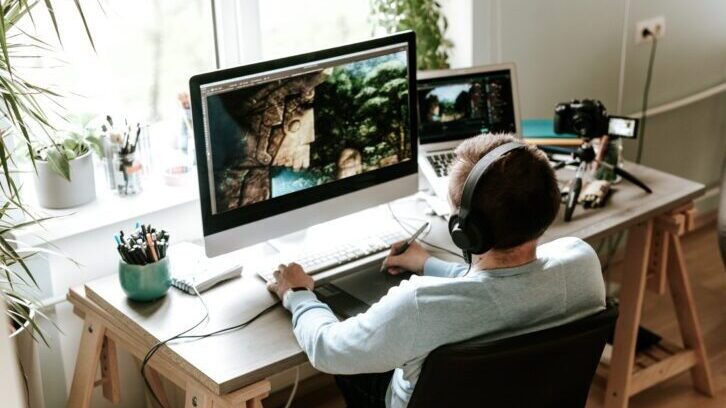I don’t see a problem. Yet.
Unless someone has an eye or vision issue, they may not think about eye care as a priority at present, like they do with their skin care or exercise regimen. Like many organizations’ responses to workplace injuries and illnesses, eye care is reactive rather than proactive.
Our eyes start being overworked from a young age. For many of us, it started with watching tv for hours at a time and sitting too close to the television. (There’s a reason our parents told us not to do that!) Nowadays, it starts with young ones staring at a laptop or smartphone for hours at a time.
Our daily lives and jobs are different now. Many things can be done virtually, available at your fingertips. For most people, their home desk setup is not as good as it is or was when they work in an office. Poor desk setup can create eye strain, which can lead to greater vision issues down the road. Here are some top risk factors while working at a desk that can contribute to developing eye or vision issues.
Screen Size
Some users prefer to work off the laptop screen all day, every day. This can be a major contributor to eye strain because the screen is often small, just as bad as staring at a phone or tablet all day. It is important to use an external monitor. Many new monitors offer a comfortable view mode in display settings. This mode is easier on the eyes, and the screen is not as bright. Often, with a dual monitor set up, the monitors are not the same. One is typically older than the other. The older one could have issues with flickering or images with lower resolution. It is best to use two new monitors that are the same.
Monitor Distance
Another common issue is the distance of the monitor. The minimum depth of the workspace should be at least 24” so the monitor can be at a good viewing distance and not too close. For a dual monitor set up, a 30” desk depth is recommended. The monitors should be placed to the side of a window rather than in front or behind to prevent glare. The lighting in the work area should be at least 350 lux. If the overhead light is too bright, try changing the bulbs to soft light bulbs for less brightness. We don’t blink our eyes as often when viewing a screen, so wearing glasses rather than contact lenses helps prevent dryness.
The best eye care = taking breaks often.
The greatest help you can give your eyes is a break. Note the 20-20-20 rule: After 20 minutes of screen viewing, look at something 20 ft away for at least 20 seconds. Repeat for as long as you’re working on your computer. There are even helpful webpages or apps that you can install into your browser to force you to follow the 20-20-20 rule.
Being proactive about eye care now will help reduce eye issues later down the road. Looking for more home office ergonomics (or in-office ergonomics) insights? Check out our Work-from-Home Toolbox.
